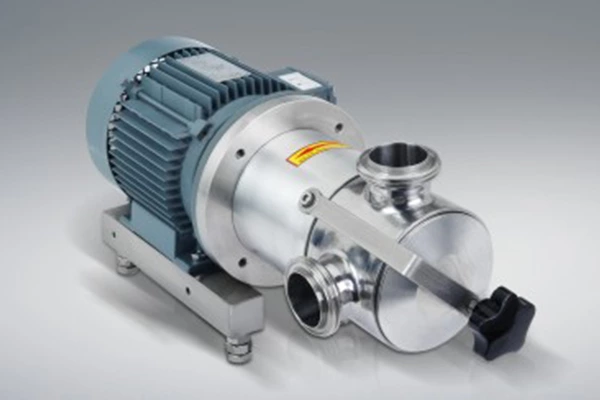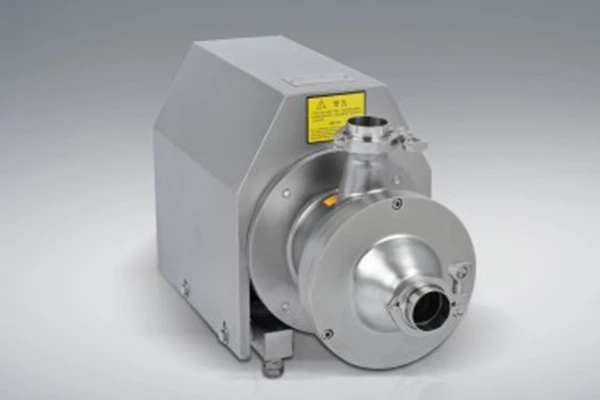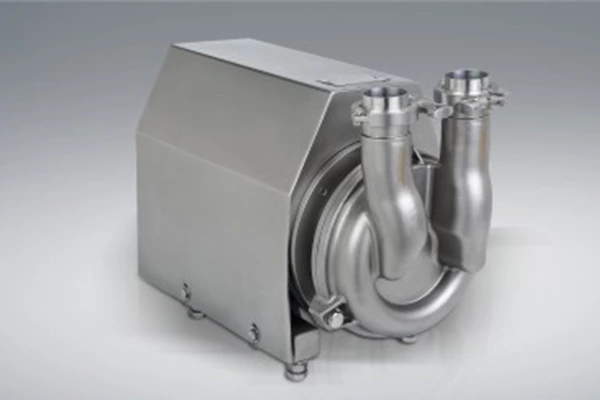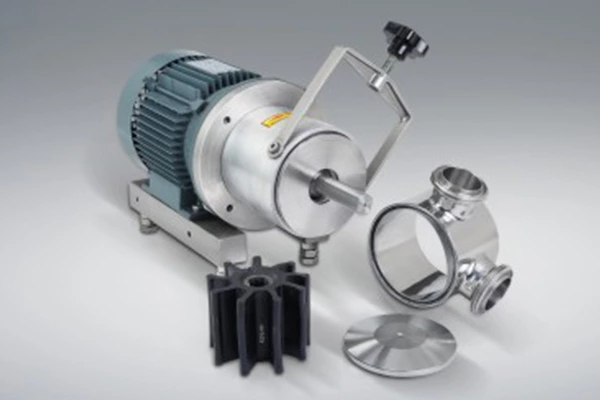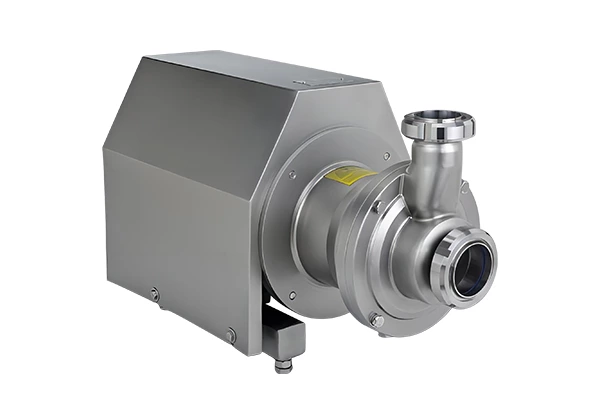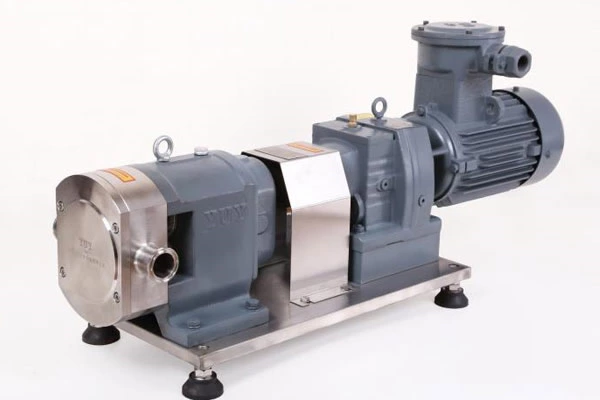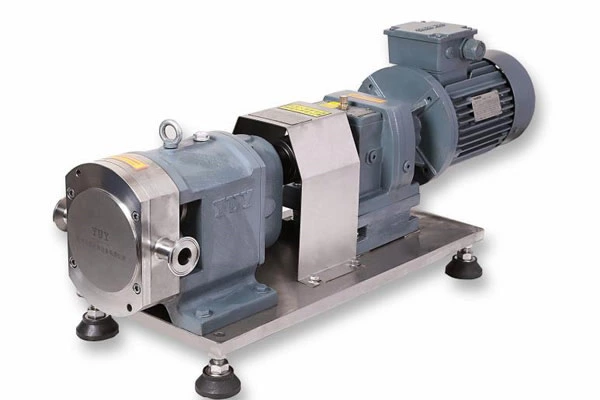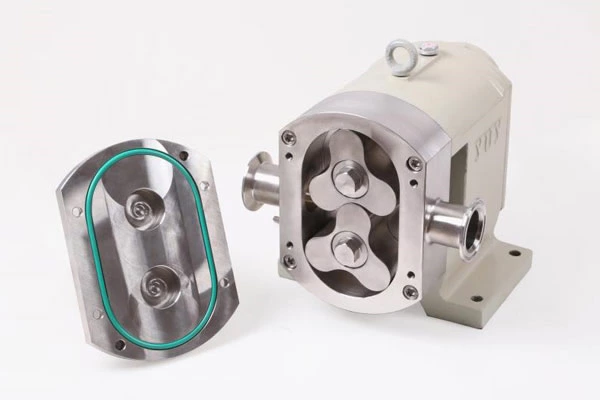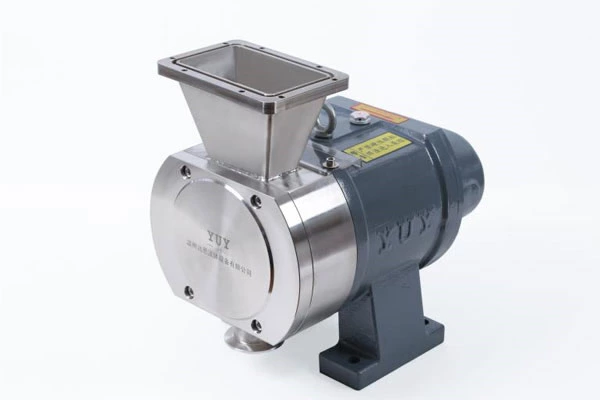Reasons Why The Cip Return Pump Cannot Pump Water
CIP Return Pump is popular among consumers for its simple structure and stable performance. However, during use, some pumps cannot pump water or discharge water. Today, Yongjia Quanda Pump and Valve Manufacturing Co., Ltd. will explain to you the various situations and reasons why such pumps cannot discharge water.
Air in the water inlet pipe and pump body
(1) Some users do not fill the water pump with enough water before starting it; sometimes it seems that the water has overflowed from the vent hole, but the pump shaft is not turned to completely discharge the air, resulting in a small amount of air remaining in the water inlet pipe or pump body.
(2) The horizontal section of the water inlet pipe in contact with the water pump should have a downward slope of more than 0.5% against the direction of the water flow, with the end connected to the water pump inlet as the highest, and should not be completely horizontal. If it is tilted upward, air will remain in the water inlet pipe, reducing the vacuum in the water pipe and the water pump, affecting water absorption.
(3) The packing of the water pump has been worn out due to long-term use or the packing has been pressed too loose, causing a large amount of water to spray out from the gap between the packing and the pump shaft sleeve. As a result, external air enters the water pump through these gaps, affecting water pumping.
(4) The water inlet pipe has been submerged in water for a long time, and holes appear on the pipe wall due to corrosion. After the water pump is working, the water level continues to drop. When these holes are exposed to the water surface, air enters the water inlet pipe through the holes.
(5) Cracks appear at the bend of the water inlet pipe, and a small gap appears at the connection between the water inlet pipe and the water pump, which may allow air to enter the water inlet pipe.
The speed of the water pump is too low
(1) Human factors. A considerable number of users arbitrarily equip the original motor with another motor because the original motor is damaged, resulting in low flow, low head, or even no water pumping.
(2) Wear of the transmission belt. Many large water pumps use belt transmission. Due to long-term use, the transmission belt wears and becomes loose, causing slippage, thereby reducing the speed of the water pump.
(3) Improper installation. The center distance between the two pulleys is too small or the two shafts are not parallel enough. The transmission belt is installed on the top with a tight edge, resulting in a small wrap angle. The diameter of the two pulleys is calculated incorrectly, and the eccentricity of the two shafts of the coupling drive pump is large, which will cause the pump speed to change.
(4) Mechanical failure of the pump itself. The impeller and pump shaft fastening nut is loose or the pump shaft is deformed and bent, causing the impeller to move more, directly rubbing against the pump body, or bearing damage, which may reduce the pump speed.
(5) The power machine maintenance is not recorded. The motor loses magnetism due to winding burnout. Changes in the number of winding turns, wire diameter, and wiring method during maintenance, or failure to completely eliminate the fault during maintenance will also cause the pump speed to change.
The suction range is too large
Some water sources are deep, and the outer terrain of some water sources is relatively flat, but the allowable suction range of the pump is ignored, resulting in less water suction or no water suction at all. It should be known that the vacuum degree that can be established at the water inlet of the water pump is limited. The suction range of absolute vacuum is about 10 meters of water column height, and the water pump cannot establish absolute vacuum. Moreover, if the vacuum is too large, it is easy to gasify the water in the pump, which is not conducive to the operation of the water pump. Therefore, each centrifugal pump has its maximum allowable suction range, which is generally between 3 and 8.5 meters. When installing the water pump, you must not just seek convenience and simplicity.
The resistance loss in the inlet and outlet pipes of the water flow is too large
Some users have measured that although the vertical distance from the reservoir or water tower to the water source is slightly less than the water pump head, the water volume is still small or no water can be lifted. The reason is often that the pipeline is too long, there are many bends in the water pipe, and the resistance loss of the water flow in the pipeline is too large. The reason is often that the pipeline is too long, there are many bends in the water pipe, and the resistance loss of the water flow in the pipeline is too large. Generally speaking, the resistance of a 90-degree elbow is greater than that of a 120-degree elbow. The head loss of each 90-degree elbow is about 0.5 to 1 meter, and the resistance of each 20-meter pipe can cause a head loss of about 1 meter. In addition, some users also arbitrarily adjust the diameter of the inlet and outlet pipes of the water pump, which also has a certain impact on the head.
Influence of other factors
(1) The bottom valve cannot be opened. Usually, it is because the water pump has been idle for too long, the bottom valve gasket is stuck, and the bottom valve without a gasket may rust.
(2) The bottom valve filter screen is blocked; or the bottom valve is submerged in the sludge layer in the water, causing the filter screen to be blocked.
(3) The impeller is severely worn. The impeller blades are worn after long-term use, affecting the performance of the water pump.
(4) Faulty or blocked gate valves or check valves will cause a decrease in flow or even no water to be pumped.
(5) Leakage in the outlet pipe will also affect the water lifting capacity.
